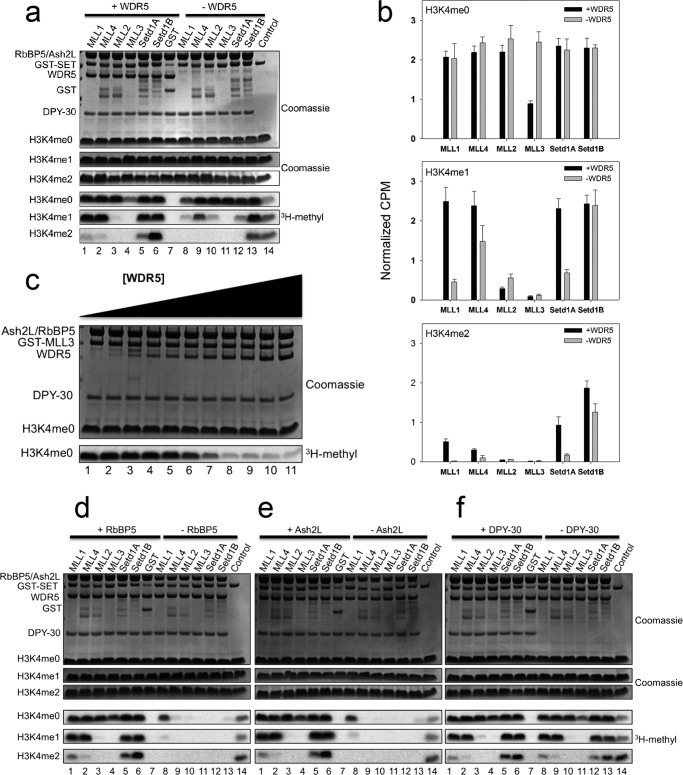FIGURE 5.
Functions of WRAD components in the SET1 family of core complexes. a, comparison of H3K4 methylation activity by SET1 family core complexes assembled with and without WDR5. The upper panels show Coomassie Blue-stained SDS-polyacrylamide gels, and the lower panels show [3H]methyl incorporation after a 4-h exposure to film. b, quantification of methyltransferase activity among SET1 family core complexes assembled with and without WDR5 by liquid scintillation counting. Error bars represent the S.E. of measurement from three to five independent experiments. c, titration of WDR5 into the MLL3-RAD complex. A 3 μm MLL3-RAD complex was assembled with increasing amounts of WRD5 and tested for methyltransferase activity when an unmodified H3 peptide was the substrate. WDR5 was titrated in 0.5 μm increments in lanes 1–9 and in 1 μm increments for lanes 10 and 11 (range is from 0 to 6 μm). d–f, comparison of H3K4 methylation activity by SET1 family core complexes assembled with and without RBBP5 (d), ASH2L (e), and DPY-30 (f). The upper panels show Coomassie Blue-stained SDS-polyacrylamide gels, and the lower panels show [3H]methyl incorporation after 4 h as shown by fluorography. All gels contain the activity of the isolated MLL1 SET domain on 100 μm unmodified H3 peptide as a control.

